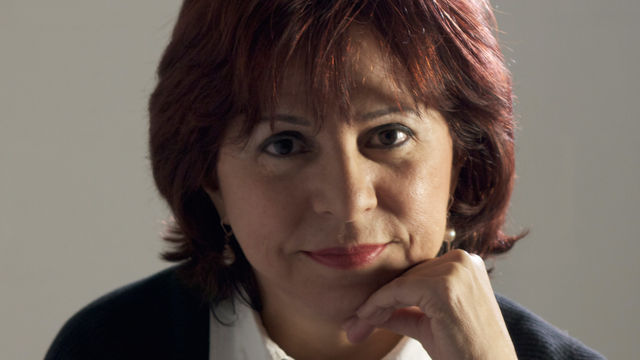
María Evelia Marmolejo
Born in 1958 in Pradera, Colombia, María Evelia Marmolejo studied art at the Universidad de Santiago de Cali (1978–80). After Marmolejo left school, she focused on performance, producing many of her seminal works between 1981 and 1985. She has centered her art on pressing key concerns: political oppression, specifically, in 1980s Colombia; social and economic conditions in Latin America; and environmental and gender issues. Her work is characterized by its ritualistic nature and feminist and political intent, as seen in her first performance, Anónimo 1 (Anonymous 1, 1981), held at the Plazoleta del Centro Administrativo Municipal in Cali, in homage to the tortured and disappeared during the regime of Julio César Turbay Ayala (president, 1978–82). For this performance Marmolejo's self-inflicted wounds and their subsequent healing were intended to bring to the public's attention the political violence prevalent at the time. A key example of her gender-focused work is 11 de marzo—ritual a la menstruación (March 11—ritual in honor of menstruation, 1981). The artist considers this performance to be a menstruation ritual and a celebration of the female body and the centrality of women in the origin of life.
In 1985, when the artist was two months pregnant, she self-exiled to Madrid due to the political turmoil in Colombia. There she studied video and television at the Centro de Enseñanza de la Imagen. On October 12, 1985, the artist realized the performance América at the Plaza de Colón in Madrid to protest the coming celebration of the five hundredth anniversary of the "discovery" of the Americas, which led to the deaths of sixty-seven million indigenous people as a result of colonialism. One of her most radical performances is Sesquilé, held on December 5, 1985, in the Hospital Anglo-Americano, Madrid, where she proposed that the birth of her child was to be considered as a work of art, only to be experienced at the hospital by a small group of people. In 1996 Marmolejo moved to New York, where she studied at the City University of New York (BA 2003, MA 2010). After 1985 Marmolejo produced only two performances, in 1992 and 2004; in 2013 the artist reactivated her artistic career and has presented new performances in Miami, New York, Milan, and San Pedro La Laguna, Guatemala.
—Cecilia Fajardo-Hill
Selected Exhibitions and Performances
1981 11 de marzo—ritual a la menstruación (performance), Galería San Diego, Bogotá
1984 Anónimo 4 (performance), Museo de Arte Contemporáneo y Pinacoteca, Guayaquil, Ecuador
2012–13 re.act.feminism #2, Centro Cultural Montehermoso Kulturunea, Vitoria-Gasteiz, Spain (traveled)
2013 May 1st, 1981–February 1st, 2013 (performance), Mandragoras Art Space, New York
2015 María Evelia Marmolejo: Engagement/Healing, Prometeo Gallery di Ida Pisani, Milan
Selected Bibliography
Fajardo-Hill, Cecilia. "María Evelia Marmolejo's Political Body." ArtNexus, no. 85 (June–August 2012): 46–53.
González, Miguel. "Rosemberg Sandoval y María Evelia Marmolejo." In Cali: Visiones y miradas, 57–60. Cali, Colombia: Secretaría de Cultura y Turismo, 2007. Originally published as "Dos artistas jóvenes de Cali: Nuevos comportamientos en las artes plásticas nacionales." Contrastes: Revista de El Pueblo (Cali) 3, no. 12 (January 2, 1981): 4–5.
Iovino, María. "María Teresa Hincapié: Action, Corporeality, and the Realm of the Feminine in Colombia." In Arte [no es] Vida: Actions by Artists of the Americas, 1960–2000, edited by Deborah Cullen, 214–23. New York: El Museo del Barrio, 2008.
Knaup, Bettina, and Beatrice Ellen Stammer, eds. re.act. feminism #2—a performing archive. Nuremberg, Germany: Verlag für Moderne Kunst; London: Live Art Development Agency, 2014.
Tarazona, Emilio. "Cuerpos y flujos: Una línea de lectura para los años ochenta en América Latina." In Perder la forma humana: Una imagen sísmica de los años ochenta en América Latina, 85–91. Madrid: Museo Nacional Centro de Arte Reina Sofía, 2012.


